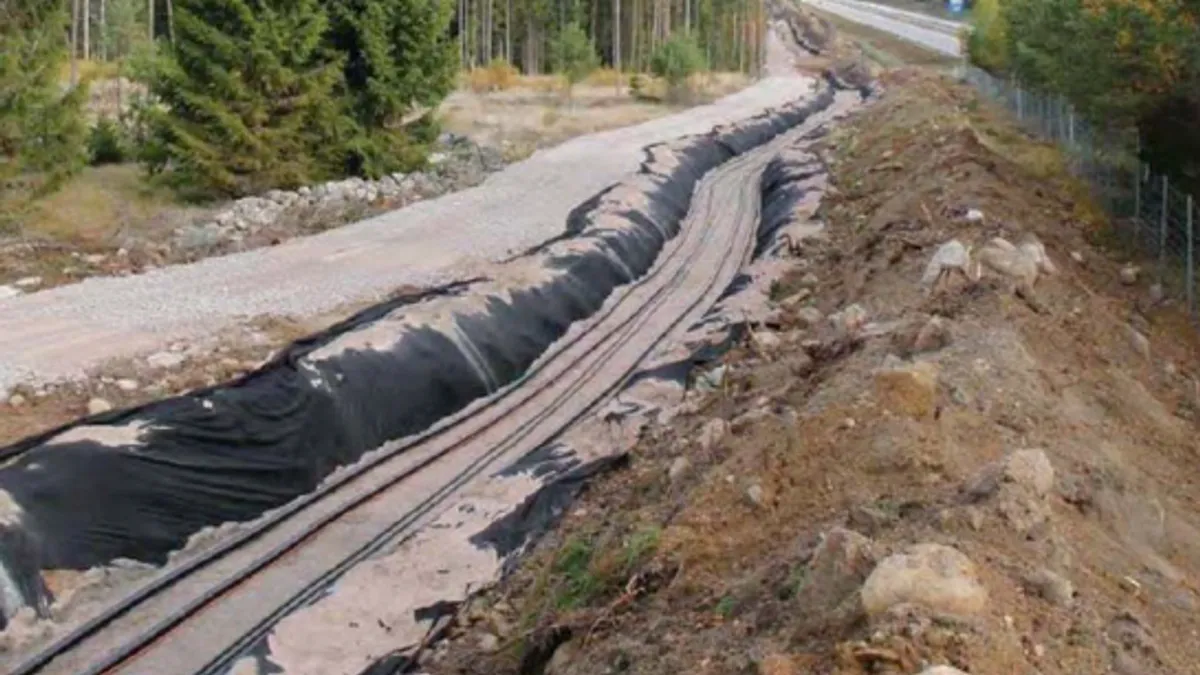Dive Brief:
- Direct Connect Development Company (DC DevCo) announced Monday a proposal for a 349-mile, 2.1 GW, high voltage direct current (HVDC) transmission line to run underground from Mason City, Iowa to the Chicagoland area, bringing renewable power from the wind-rich West into wholesale power markets.
- The SOO Green Renewable Rail (SOO Green) project is expected to cost $2.5 billion and could be operational by 2024, the company told the Des Moines Register. The project seeks to bypass the permitting difficulties of larger overhead transmission projects by burying the transmission line along an existing railroad and boring under ecologically sensitive areas.
- The project aims to connect two of the largest electricity markets in the country, the Midcontinent Independent System Operator (MISO) and PJM Interconnection. "We're going to beat all of PJM" with cheap renewable power prices, Joe DeVito, DC DevCo's president, told Utility Dive.
Dive Insight:
The transmission project is intended to connect to both sides of the grid, to enable buyers and sellers to enter into standard transactions, making SOO Green into a renewable energy hub.
"We're going to draw power from the entire Upper Midwest using the existing systems," DeVito said.
The area offers geographic diversity and generates more renewable energy, particularly wind power in the West.
"With the amount of renewable energy we're going to be bringing in and the cost point, it's going to be the most economic energy on the [PJM] system," he added.
The project will enable MISO wind farms to reach consumers in the PJM market, according to a press statement from Matt Neal, vice president of Siemens Industry. Siemens will also be supplying HVDC converter technology and services and its financial services subsidiary is one of the main investors in SOO Green, along with Copenhagen Infrastructure Partners and Jingoli Power.
The power will mostly flow from MISO to PJM, according to DeVito, because MISO prices are typically lower, making it more profitable to sell into the latter.
"SOO Green is connecting to very robust points on both the MISO and PJM transmission systems, and there is limited congestion," DeVito said. "SOO Green is a Seam Buster," referring to the connection between the two markets.
Construction details
As more renewable energy is being developed, grid infrastructure across the country needs to be redone. That is especially true in the West, according to Ben Serrurier, policy manager of western markets for the solar developer Cypress Creek Renewables.
"We do have a huge need for new transmission," he told Utility Dive.
The project is not typical, with its independent developer and lack of funding through a utility rate base, though several non-utility HVDC lines have been proposed from Quebec to New England. Transmission projects are large undertakings and can be very expensive, even when done above ground, as is more conventional.
Completing a nearly 350-mile HVDC line by 2024 is a "really fast" pace, Serrurier said.
"If [DC DevCo is] able to figure out a new way of developing, to sort of bring these projects to bear, it could be really effective across the West in accelerating the clean energy transition," he said.
"Everything that we've used in our initial model is based on traditional construction techniques and we think there are things we can do to improve upon that," DeVito said.
Despite the billion-dollar price tag, other factors, such as time savings, should be factored in compared to other transmission projects, DeVito said.
"We're not struggling trying to inform permitting agencies about multiple paths," Devito said. "So we can go very quickly."
By following an existing railroad, DC DevCo is assuming their plan has a set path and can use existing railroad right of way.
"Going along an active railroad, you know, that's how we built the fiber optics network in the U.S., which is the last major infrastructure build-out, and it makes a lot of sense," DeVito said.
Above-ground transmission projects might involve negotiations with land owners and they would need to permit alternative plans as well for a route, according to DeVito.
"If you talk to environmental agencies, the two things you most frequently hear when it comes to transmission is 'can't you put it underground?' and 'can't you put it on a brown field site?'" DeVito said.
The project could potentially be replicated based on the terrain being used, he added.
"Anywhere you have long linear-path infrastructure, like rail, you can install cables like this," DeVito said.
Lifeline for large transmission projects?
SOO Green is the latest large-scale transmission expansion proposed, many of which have been rejected or are still trying to find ways to advance.
Texas regulators rejected a 2 GW wind farm in Oklahoma, the Wind Catcher Energy Connection, which included a $1.6 billion transmission line to move the energy, after determining that the project did not provide enough customer benefits.
In the Northeast, efforts are underway in Maine to help approve the New England Clean Energy Connect, a transmission project that would bring more than 1 GW of hydropower from Canada to Massachusetts consumers. The project still faces a long road.
CORRECTION: A previous version of this article misidentified the NECEC transmission project. The article is also updated to include details about additional non-utility HVDC line proposals.















